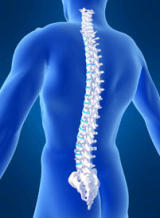Intraoperative Neurophysiological Monitoring (IOM) is vitally important to reduce the incidence of post-operative neurological deficits. IOM provides early-warning feedback to the surgical team concerning the sensory and motor function of the brain and spinal cord during a variety of surgeries.
Neurosurgery
- Posterior Fossa Tumor
- Microvascular Decompression (MVD)
- Intracranial Aneurysm
- Intracranial Arteriovenous Malformation (AVM)
- Temporal/Parietal Tumors with Motor Mapping
- Anterior Cervical Discectomy and Fusion (ACDF)
- Anterior Corpectomy
- Lumbar Laminectomy
- Lumbosacral Decompression
- Instrumentation for Spinal Instability
- Spinal Cord Tumors
- Spinal Arteriovenous Malformation (AVM)
- Tethered Cord
- Selective Doral Rhizotomy
- Brachial Plexus or Distal Peripheral Nerve Injury
- Spinal Instrumentation
- Scoliosis Correction
- Open Reduction Internal Fixation (ORIF) of Pelvis and/or Acetabulum
- Acoustic Neuroma
- Mastoidectomy
- Parotidectomy
- Thyroidectomy
Vascular and Cardiothoracic Surgery
- Carotid Endarterectomy
- Repair of Thoracic Aortic Aneurysm
Interventional Radiology
- Embolization of Cerebral or Spinal Aneurysm
- Embolization of Cerebral or Spinal Arteriovenous Malformation (AVM)

